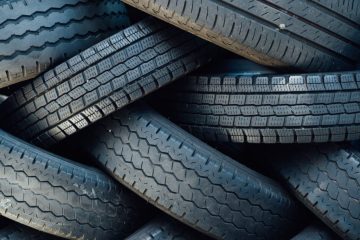In the previous installment of our Hazardous Gas Management series, we shared our insights on government regulations, industry best practices and an overview of our Toxic & Hazardous Fumes Monitoring solution implemented at the Directorate Of Industrial Safety & Health (DISH), Tamil Nadu.
In this installment, we will discuss our studies on Leak Detection & Repair (LDAR) & Fugitive Emissions, undertaken at GLens Innovation Laboratories. We will also discuss our capabilities for conducting audits of safe storage of hazardous chemicals and solvents to prevent such incidents of gas leakage as have occurred in several parts of India over the last week.
Industry Best Practices
In order to prevent accidents and incidents of gas leakage, industries must focus on the following during their operations-
1. Storage and handling of hazardous chemicals or gases.
2. Generation of hazardous chemicals or gases in the production processes.
We provide solutions to industries by installing specific gas detectors and supporting parameters like level indicator, sensors, temperature and pressure. Accordingly, alarms systems may be configured, based on the toxic levels. Moreover, the same detectors may be used for ambient monitoring of leaks.
An Overview of Our Leak Detection & Repair (LDAR) & Fugitive Emissions Solutions
Our Leak Detection & Repair (LDAR) solution is to check for fugitive leaks. LDAR is mandatory as part of the government regulatory guidelines for petrochemicals and refineries industries. Today, pharmaceutical industries are also increasingly focused on adapting LDAR practises.
Through our LDAR solution, industries may measure the level of concentration of fugitive leaks, arrive at the load value per day or per year, and calculate the % values of concentration before and after reduction.
Our solution for monitoring and analysis of Fugitive Emissions is applicable for hazardous solvents and leak checks. The solution capabilities include:
- Identifying the hazard
- Calculating the amount of exposure to said hazard
- Preventing adverse health effects
- Calculating product loss.
As part of the solution, we simulate monitoring models and generate alarms based on set threshold limits. For instance, if the highest limit value of Hydrogen Sulphide (H2S) is 10ppm, the threshold may be set as 5ppm. Based on this, alarms/ notifications are generated and necessary emergency preparedness actions are undertaken.
The solution is applicable for Chlorine, Methyl Mercaptan among other hazardous gases and chemicals.
Storage of Hazardous Chemicals & Solvents- Best Practices & Solutions
GLens Innovation Laboratories helps conduct audits for the Safe Storage of Hazardous Chemicals & Solvents, in liaison with American Board of Industrial Hygiene (ABIH) and British Occupational Hygiene Society (BOHS) certified auditors.
The scope of the audit is to verify the storage of chemicals, particularly hazardous substances- liquids, gases or solids, which in their pure form or as mixtures could possibly endanger human life and the environment.
Here are some industry best practices that must be followed with regards to hazardous chemical and solvents-
While considering the storage of such chemicals, it is important to note that owing to the chemicals’ varying properties, there is no single rule of thumb that would work well. To prevent serious mishaps or accidents, industries must take into account the following-
- Varying properties of the dangerous substances
- Training operators and field workers
- Maintain adequate design & installation of buildings & equipment
- Prevent exposure to heat from nearby heat sources
Possible Causes & Effects of Hazardous Chemical Leakage
Now that we have understood industry best practices and the possible causes & effects of Hazardous Chemical Leakage, we will share a brief overview of GLens Innovation Laboratories‘ Audit purview-
1.Hazard Related to Storage of Chemicals
2. Organization and Operation of the Storage Facility
3. Storage Concept
4. Risk Assessment:
a) Source of Information
b) Work Processes and Operating Conditions to be Considered
c) Potential Explosive Atmospheres
5. Basic Requirements and Measures:
a) Storage Places and Conditions
b) Requirements of Storage Containers and Packaging
c) Storage Plan / Stock List
d) Combined Storage
e) Managing the Residence Time in a Storage Area
6. Contamination Control
7. General Containment and Controls
8. Instrumentation (includes sensors, indicators, recorders and transmitters for measurements such as temperature, pressure, flow, liquid level).
9. Organizational Requirements and Measures:
a) Employer Responsibilities and Tasks
b) Logistic Manager Responsibilities and Tasks
c) Employees Responsibilities and Tasks
d) Operating Instructions and Training
e) Safe Behavior
f) Hygiene
g) Personal Protective Equipment
10. Organizational Failures and Emergencies:
a) Emergency Plan
b) Action in Case of Leakage
11. Storage Systems
12. Retention Facilities
13. Fire Fighting
14. Explosion Protection
15. Special Storage Requirements for Hazardous Substances with Specific Properties
16. Training
Summing Up…
Considering the recent chemical storage fire accidents, hazardous gas leakages due to storage issues, explosions due to compatibility, spillages and volatilization that has caused severe effects on environment and human health, all industries should have proper storage, safety, containment and emergency preparedness.
GLens Innovation Labs is fully equipped to conduct audits of industries’ hazardous chemicals storage facilities with certification by ABIH and BOHS certified Auditors.
If you have any questions or concerns, feel free to drop us a message here or reach out to Dr. S. Suresh Kumar, our Chief Technical Director at suresh.kumar@knowledgelens.com.


